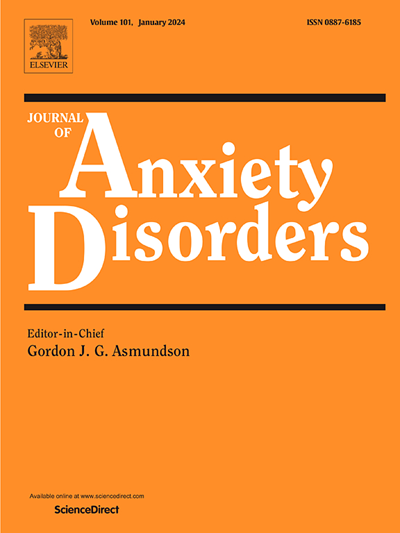利用社交人工智能图像系统筛查社交焦虑症。
IF 4.8
2区 医学
Q1 PSYCHIATRY
引用次数: 0
摘要
社交焦虑障碍(SAD)是一种普遍存在的焦虑障碍,其特征是对社交场景的强烈恐惧和回避。SAD的早期发现为早期干预奠定了基础。然而,由于社交焦虑中社交回避的性质,筛查在临床环境中具有挑战性。经典问卷也存在主观性、重复测量的记忆偏差和文化影响的局限性。因此,迫切需要开发一种可靠且易于使用的工具来广泛用于社交焦虑筛查。本文基于生成式多模态基础人工智能(AI)模型开发了社交人工智能图片系统(SAIPS),共包含279张社交图片和118张对照图片。我们构建了社会场景来代表SAD的核心触发因素,如对负面评价的恐惧、社会互动和表现焦虑,并映射到社会焦虑的特定维度,以捕捉其多面性。没有社交互动的图片作为对照,旨在揭示特定于社交场景的反应模式,并提高系统预测社交焦虑特征的准确性。通过实验室和在线实验,我们从五个方面收集了对SAIPS的评价。机器学习结果表明,对SAIPS的评分强有力地反映和预测了一个人的社交焦虑特征,尤其是社交焦虑和唤醒评分。这个预测是可靠的,即使是基于一个少于30张图片的简短版本。综上所述,saps可以作为支持社交焦虑筛查和纵向预测的有前途的工具。本文章由计算机程序翻译,如有差异,请以英文原文为准。
Screening social anxiety with the Social Artificial Intelligence Picture System
Social anxiety disorder (SAD) is a prevalent anxiety disorder marked by strong fear and avoidance of social scenarios. Early detection of SAD lays the foundation for the introduction of early interventions. However, due to the nature of social avoidance in social anxiety, the screening is challenging in the clinical setting. Classic questionnaires also bear the limitations of subjectivity, memory biases under repeated measures, and cultural influence. Thus, there exists an urgent need to develop a reliable and easily accessible tool to be widely used for social anxiety screening. Here, we developed the Social Artificial Intelligence Picture System (SAIPS) based on generative multi-modal foundation artificial intelligence (AI) models, containing a total of 279 social pictures and 118 control pictures. Social scenarios were constructed to represent core SAD triggers such as fear of negative evaluation, social interactions, and performance anxiety, mapping to specific dimensions of social anxiety to capture its multifaceted nature. Pictures devoid of social interactions were included as a control, aiming to reveal response patterns specific to social scenarios and to improve the system’s precision in predicting social anxiety traits. Through laboratory and online experiments, we collected ratings on SAIPS from five dimensions. Machine learning results showed that ratings on SAIPS robustly reflected and predicted an individual’s trait of social anxiety, especially social anxiety and arousal ratings. The prediction was reliable, even based on a short version with less than 30 pictures. Together, SAIPS may serve as a promising tool to support social anxiety screening and longitudinal predictions.
求助全文
通过发布文献求助,成功后即可免费获取论文全文。
去求助
来源期刊

Journal of Anxiety Disorders
Multiple-
CiteScore
16.60
自引率
2.90%
发文量
95
期刊介绍:
The Journal of Anxiety Disorders is an interdisciplinary journal that publishes research papers on all aspects of anxiety disorders for individuals of all age groups, including children, adolescents, adults, and the elderly. Manuscripts that focus on disorders previously classified as anxiety disorders such as obsessive-compulsive disorder and posttraumatic stress disorder, as well as the new category of illness anxiety disorder, are also within the scope of the journal. The research areas of focus include traditional, behavioral, cognitive, and biological assessment; diagnosis and classification; psychosocial and psychopharmacological treatment; genetics; epidemiology; and prevention. The journal welcomes theoretical and review articles that significantly contribute to current knowledge in the field. It is abstracted and indexed in various databases such as Elsevier, BIOBASE, PubMed/Medline, PsycINFO, BIOSIS Citation Index, BRS Data, Current Contents - Social & Behavioral Sciences, Pascal Francis, Scopus, and Google Scholar.
 求助内容:
求助内容: 应助结果提醒方式:
应助结果提醒方式:


